Post by torpedo on Jan 23, 2020 1:17:06 GMT
Why the C-130 Is Such a Badass Plane

C-130 Hercules flying along the South Vietnamese coast.
Bettmann ArchiveGetty Images
With others, he made a desperate dash from the bunker toward the lurching C-130.
"Every time [the pilot] jammed on the brake, it pushed the passengers forward," Nguyen told Fox News in 2014. "It created more space in the back… So, I jumped in. Everybody jumped in. And a few minutes after that, the ramp door closed..."
Designed to carry only 90 paratroopers, the Hercules's belly was bursting with far more people than that. Its lone pilot, a VNAF major, pushed its four Allison T56 turboprops to full throttle and began his takeoff down the 10,000 foot runway.
At the opposite end of the runway, the airplane still hadn't taken wing.
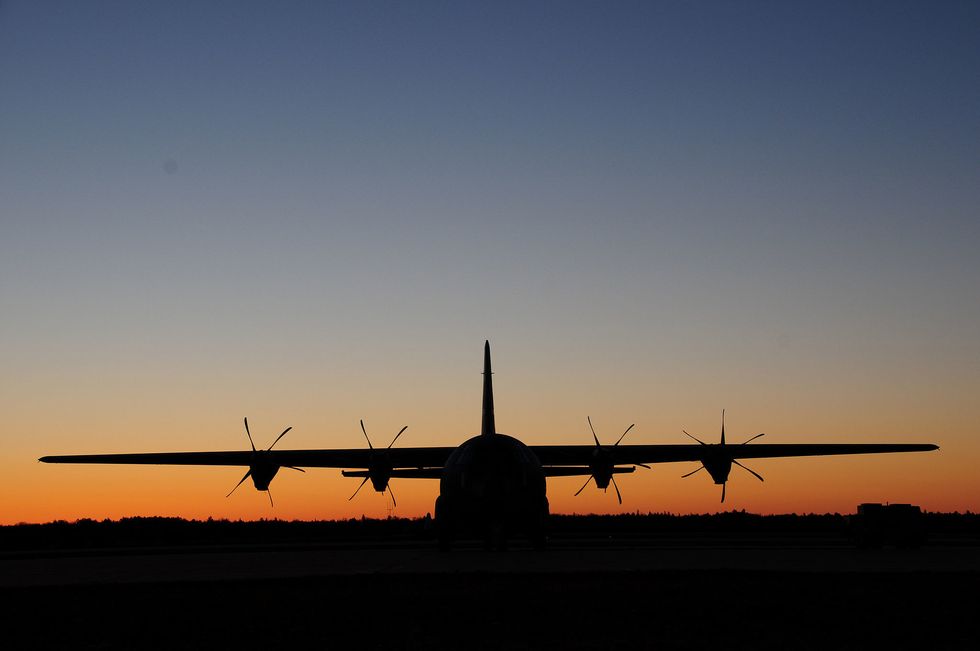
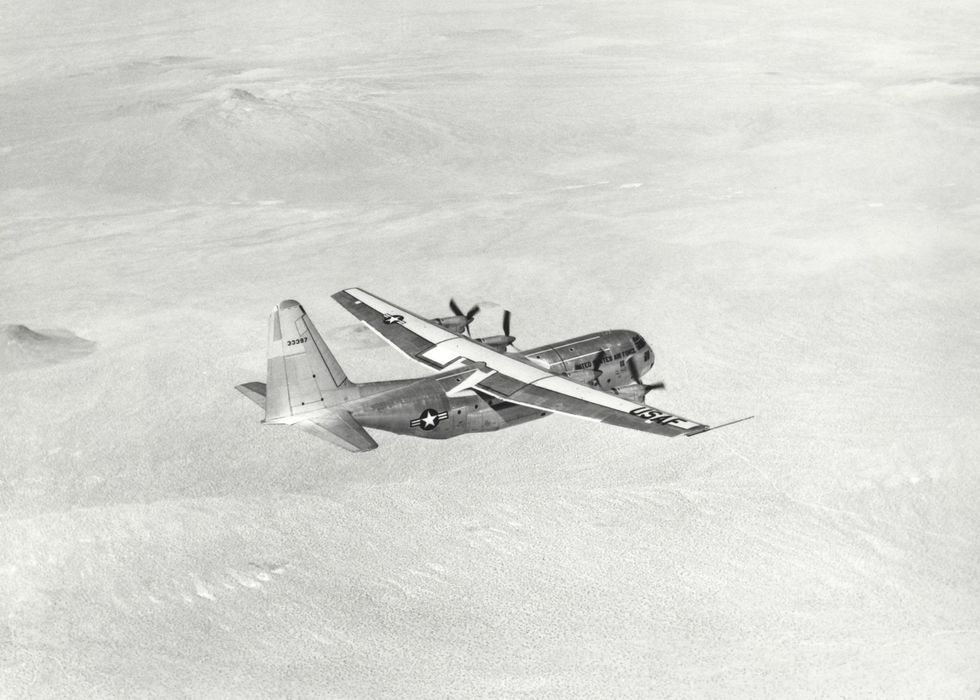
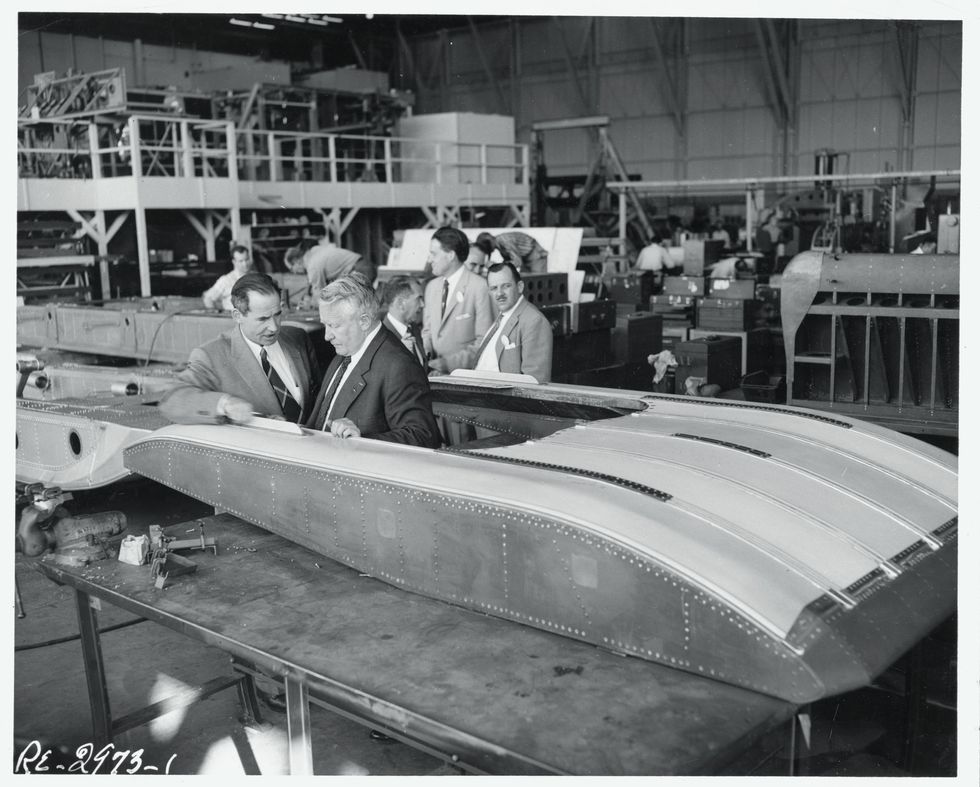
Two U.S. colonels overlook production of the C-130 in Marietta, Georgia.
George RinhartGetty Images
Production of the C-130A began at Lockheed's plant in Marietta, Georgia, soon thereafter and the Herc has been rolling off the assembly line ever since. The Hercules has the longest continuous military aircraft production run in history, and one of the top three longest continuous aircraft production lines of any type. A remarkable 70 countries operate C-130s, which have been produced in more than 70 different variants.
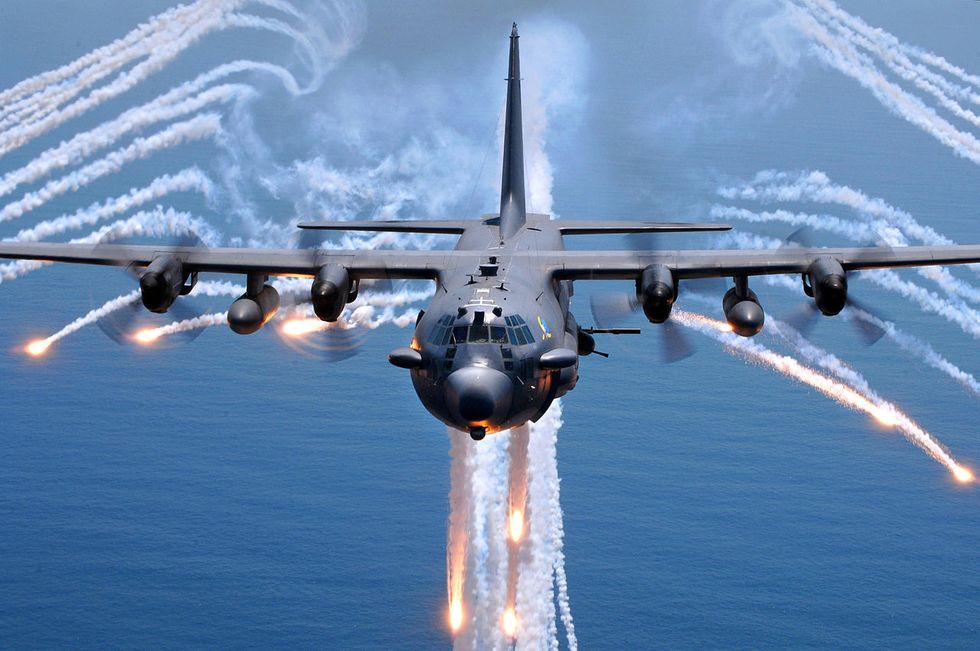
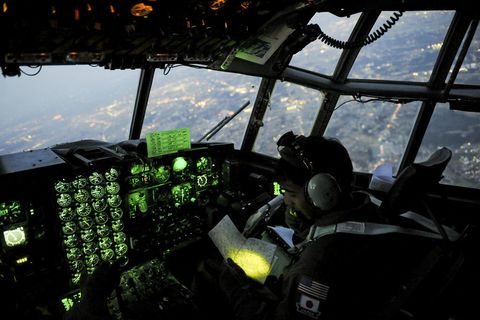
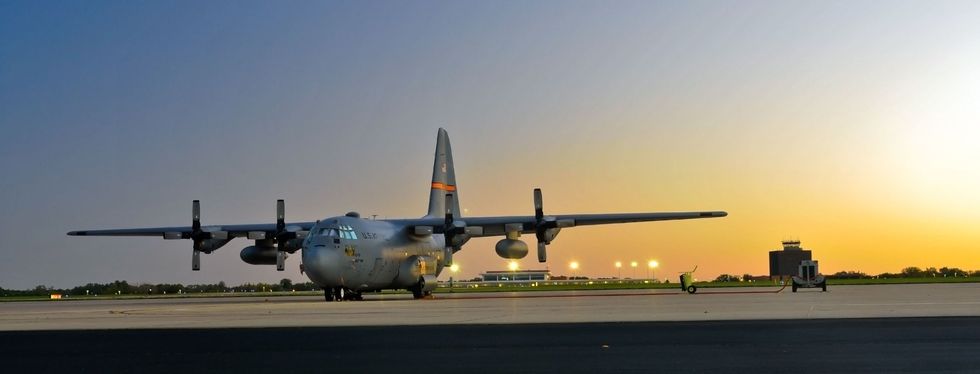
It's the go-anywhere, do-anything flyer that's much more than a jack of all trades.
By Eric Tegler
Amidst the chaotic withdrawal of American forces from Saigon in April 1975, a young man in the South Vietnamese Air Force (VNAF), Tinh Nguyen, peered out from a bunker at Tan Son Nhut Air Base. The airfield had been under North Vietnamese mortar fire all night and more than 100 aircraft had been destroyed. But there was still one flyable C-130A (the initial production version). During a lull in the firing, it taxied toward the runway navigating around the smoking debris.
This massive plane's rear ramp was still open with a crowd of people huddling on it, and Nguyen knew he had to get to it.
Amidst the chaotic withdrawal of American forces from Saigon in April 1975, a young man in the South Vietnamese Air Force (VNAF), Tinh Nguyen, peered out from a bunker at Tan Son Nhut Air Base. The airfield had been under North Vietnamese mortar fire all night and more than 100 aircraft had been destroyed. But there was still one flyable C-130A (the initial production version). During a lull in the firing, it taxied toward the runway navigating around the smoking debris.
This massive plane's rear ramp was still open with a crowd of people huddling on it, and Nguyen knew he had to get to it.
"It was either leave right then or stay and get killed."

C-130 Hercules flying along the South Vietnamese coast.
Bettmann ArchiveGetty Images
With others, he made a desperate dash from the bunker toward the lurching C-130.
"Every time [the pilot] jammed on the brake, it pushed the passengers forward," Nguyen told Fox News in 2014. "It created more space in the back… So, I jumped in. Everybody jumped in. And a few minutes after that, the ramp door closed..."
Designed to carry only 90 paratroopers, the Hercules's belly was bursting with far more people than that. Its lone pilot, a VNAF major, pushed its four Allison T56 turboprops to full throttle and began his takeoff down the 10,000 foot runway.
At the opposite end of the runway, the airplane still hadn't taken wing.
"It was either leave right then or stay and get killed."
But in the runway's 1000-foot overrun, the C-130 staggered into the air. After a harrowing flight, it touched down three and a half hours later at U Tapao Royal Thai AB, southeast of Bangkok. On the ramp, American personnel were visibly surprised as they watched 452 people disembark. With herculean effort, the C-130 had lifted more than 20,000 pounds above its operational limit.
The C-130 has been a lifesaver during its six-decade history. It's been a death-bringer, too.
But in the runway's 1000-foot overrun, the C-130 staggered into the air. After a harrowing flight, it touched down three and a half hours later at U Tapao Royal Thai AB, southeast of Bangkok. On the ramp, American personnel were visibly surprised as they watched 452 people disembark. With herculean effort, the C-130 had lifted more than 20,000 pounds above its operational limit.
The C-130 has been a lifesaver during its six-decade history. It's been a death-bringer, too.
Hercules Is More Than a Name

With a squat stance, bulbous nose, four big turboprop engines, and massive fuselage, the C-130 cruises at a relatively modest 290 to 320 knots. Lockheed dubbed it "Hercules" after the mythological hero known for his strength and courage. The name fits the company's tradition of naming aircraft after celestial constellations, along with the P-2V Neptune and P-3 Orion.
Compared to high-profile jet fighters like the F-22 Raptor or F-35 Lightning II, the Hercules looks like a bloated throwback. But what it lacks in sleekness it more than makes up for in heart. Like the A-10 Warthog, it's the Hercules' awesome capability that makes it a total badass. Simply put, the C-130 is a do-anything aircraft and its service record shows it. Lockheed says the C-130 has flown at least 100 different missions in its 63-year-old life, including its most recent return to the military limelight.
On April 13, an MC-130 dropped the largest conventional bomb ever used in combat—the GBU-43/B Massive Ordnance Air Blast (MOAB), or "mother of all bombs"—on an Islamic State tunnel complex in Afghanistan's Nangarhar Province. The MC-130's crew released it from the rear cargo ramp using a drag chute, a procedure that dates back to before the Korean War. Indeed, that conflict is where the C-130 was born.
Compared to high-profile jet fighters like the F-22 Raptor or F-35 Lightning II, the Hercules looks like a bloated throwback. But what it lacks in sleekness it more than makes up for in heart. Like the A-10 Warthog, it's the Hercules' awesome capability that makes it a total badass. Simply put, the C-130 is a do-anything aircraft and its service record shows it. Lockheed says the C-130 has flown at least 100 different missions in its 63-year-old life, including its most recent return to the military limelight.
On April 13, an MC-130 dropped the largest conventional bomb ever used in combat—the GBU-43/B Massive Ordnance Air Blast (MOAB), or "mother of all bombs"—on an Islamic State tunnel complex in Afghanistan's Nangarhar Province. The MC-130's crew released it from the rear cargo ramp using a drag chute, a procedure that dates back to before the Korean War. Indeed, that conflict is where the C-130 was born.
During that war, the Air Force recognized it had no airplane capable of airlifting combat troops over medium distances to short, austere airfields. In 1951, Boeing, Douglas, and Fairchild presented alternative proposals, but ultimately the USAF chose Lockheed's design. Willis Hawkins, who would go on to design the Corona satellite, Polaris missile, and M1 Abrams tank, created the winning design and described the C-130 in a mere 110-page document. Compared to Lockheed's 2,500-page F-35 proposal, the C-130 writeup is a breezy read.
According to Lockheed Martin historian Jeff Rhodes, Hawkins' design team took the M551 Sheridan Tank, the largest piece of equipment the Army needed to airlift, and "drew a circle around it and that set the diameter of the fuselage." As for the fuselage's 40-foot length, its inspiration came from somewhere else entirely. "The basic C-130, aft of the cockpit and before the ramp, is the length of a railroad boxcar," Rhodes says.
According to Lockheed Martin historian Jeff Rhodes, Hawkins' design team took the M551 Sheridan Tank, the largest piece of equipment the Army needed to airlift, and "drew a circle around it and that set the diameter of the fuselage." As for the fuselage's 40-foot length, its inspiration came from somewhere else entirely. "The basic C-130, aft of the cockpit and before the ramp, is the length of a railroad boxcar," Rhodes says.

The YC-130 flying from Burbank, California, to Edwards Air Force Base during its inaugural flight on August 23, 1954.
Stocktrek ImagesGetty Images
The YC-130 made its first flight on Aug. 23, 1954, at Lockheed's Burbank, California plant. With four Allison T56-A-lA turboprop engines, delivering 3,750 horsepower each and driving three-bladed Curtiss-Wright electric-reversible propellers, the YC-130 took off in only 800 feet.
The Pentagon had found its plane.
Stocktrek ImagesGetty Images
The YC-130 made its first flight on Aug. 23, 1954, at Lockheed's Burbank, California plant. With four Allison T56-A-lA turboprop engines, delivering 3,750 horsepower each and driving three-bladed Curtiss-Wright electric-reversible propellers, the YC-130 took off in only 800 feet.
The Pentagon had found its plane.
Whatever Is Needed

Two U.S. colonels overlook production of the C-130 in Marietta, Georgia.
George RinhartGetty Images
Production of the C-130A began at Lockheed's plant in Marietta, Georgia, soon thereafter and the Herc has been rolling off the assembly line ever since. The Hercules has the longest continuous military aircraft production run in history, and one of the top three longest continuous aircraft production lines of any type. A remarkable 70 countries operate C-130s, which have been produced in more than 70 different variants.
"The C-130 is whatever is needed," Rhodes observes. "It's an ambulance, it's a gunship, it drops paratroopers, it carries cargo, it's a TV broadcast system, it's launched drones, and caught satellites. You name it, the Hercules has done it at some point in its career."
The Herc has served with the U.S. Air Force, Navy, Marines, Coast Guard, NASA, and foreign militaries and commercial operators (as the L100) all over the world. It's been an aerial refueler, forward air controller, hurricane hunter, fire tanker, Antarctic resupply aircraft, search-and-rescue platform, and on and on and on.
"The C-130 is whatever is needed...you name it, the Hercules has done it at some point in its career."
C-130s went into harm's way almost immediately with its first deployment to Europe in 1956, and the first combat loss came in 1958, when a C-130A-II was shot down over Armenia during a reconnaissance mission.
While gaining notoriety for its performance ashore, the Hercules simultaneously made history as the largest, heaviest aircraft ever to land on and launch from an aircraft carrier, a distinction it earned in October 1963 as part of a test to assess its feasibility as a carrier onboard delivery aircraft.
The Herc has served with the U.S. Air Force, Navy, Marines, Coast Guard, NASA, and foreign militaries and commercial operators (as the L100) all over the world. It's been an aerial refueler, forward air controller, hurricane hunter, fire tanker, Antarctic resupply aircraft, search-and-rescue platform, and on and on and on.
"The C-130 is whatever is needed...you name it, the Hercules has done it at some point in its career."
C-130s went into harm's way almost immediately with its first deployment to Europe in 1956, and the first combat loss came in 1958, when a C-130A-II was shot down over Armenia during a reconnaissance mission.
While gaining notoriety for its performance ashore, the Hercules simultaneously made history as the largest, heaviest aircraft ever to land on and launch from an aircraft carrier, a distinction it earned in October 1963 as part of a test to assess its feasibility as a carrier onboard delivery aircraft.
A year later, the C-130A began sorties for the U.S. Air Force in Vietnam. They hauled cargo, dropped leaflets, and delivered weapons on the Ho Chi Minh Trail. Foreshadowing President Trump's recent Afghanistan mission, C-130Bs also dropped a pair of 10,000-pound bombs in Vietnam in October 1968 as a means of clearing landing zones for helicopters.
But the C-130 was more than an military brute, it was was one of three legendary Lockheed airplanes operated by the CIA in the 1960s, joining the U-2 and A-12 (SR-71) as an intelligence gathering tool. In 1969, a CIA-operated C-130E made a clandestine drop of sensor pallets near China's Lop Nur Nuclear Weapons Test Base to get information on Chinese nuclear capabilities. C-130B-II electronic reconnaissance aircraft operated in Europe and Japan and later C-130E models took on standoff jamming roles in the 1970s.
But the C-130 was more than an military brute, it was was one of three legendary Lockheed airplanes operated by the CIA in the 1960s, joining the U-2 and A-12 (SR-71) as an intelligence gathering tool. In 1969, a CIA-operated C-130E made a clandestine drop of sensor pallets near China's Lop Nur Nuclear Weapons Test Base to get information on Chinese nuclear capabilities. C-130B-II electronic reconnaissance aircraft operated in Europe and Japan and later C-130E models took on standoff jamming roles in the 1970s.
In one of their more surprising roles, special EC-130E Commando Solo Hercs transmitted radio and TV broadcasts several hours a night over Iraq as part of psychological warfare campaigns as prelude to the 1991 Persian Gulf War and 2003 Iraq War.
A Hawk of War, a Dove of Peace

AC-130H jettisons flares during countermeasure training, 2007.
U.S. Air Force
Today's AC-130E/H/U/W Spooky/Spectre/Stinger gunship is renowned for its ability to protect special operations troops on the ground from Vietnam all the way up to the recent Afghanistan War with lethal 20mm/30mm/40mm cannon, and even 105mm Howitzer as well as additional smart bombs and missiles. In fact, one single AC-130 helped stop a southbound Iraqi armored column during the Battle of Khafji in 1991.
But the Herc was also central to rescue missions, whether dramatic hostage situations like the successful 1976 Israeli Raid on Entebbe or the failed 1980 Iranian hostage mission, and has saved countless lives on land and at sea with the Coast Guard. Breaking more records, the C-130 is also the first fixed-wing aircraft to land at the site of natural disasters like Hurricane Katrina, Haiti's earthquake, Fukushima, and the recent Peruvian floods.
U.S. Air Force
Today's AC-130E/H/U/W Spooky/Spectre/Stinger gunship is renowned for its ability to protect special operations troops on the ground from Vietnam all the way up to the recent Afghanistan War with lethal 20mm/30mm/40mm cannon, and even 105mm Howitzer as well as additional smart bombs and missiles. In fact, one single AC-130 helped stop a southbound Iraqi armored column during the Battle of Khafji in 1991.
But the Herc was also central to rescue missions, whether dramatic hostage situations like the successful 1976 Israeli Raid on Entebbe or the failed 1980 Iranian hostage mission, and has saved countless lives on land and at sea with the Coast Guard. Breaking more records, the C-130 is also the first fixed-wing aircraft to land at the site of natural disasters like Hurricane Katrina, Haiti's earthquake, Fukushima, and the recent Peruvian floods.

The Hercules even helps make other planes as it served as a testbed for what would eventually be the engines of the European Airbus A400M airlifter. Long story short, saying the C-130 is a jack of all trades is selling it short.
But one important question remains: What is it like to actually fly the thing?
"Flying low level, going into dirt or grass strips, landing at little places that nobody else could get to with this big airplane is so much fun," says former USAF C-130 pilot and Lockheed director of business development Larry Gallogly. "I think of all the assault landings I made early in my career which may not have been as smooth as I would have liked but the airplane could take a beating."
More Badass Planes
And "take a beating" is putting it mildly. In 1971, for example, a ski-equipped Navy LC-130 crashed on takeoff in Antarctica. It lay there buried in an icy crevasse for 17 years before the Navy decided to pull it out and repair the damage. It took off and flew to New Zealand on January 11, 1988, and with a little more work it served the Navy for several years thereafter.
But one important question remains: What is it like to actually fly the thing?
"Flying low level, going into dirt or grass strips, landing at little places that nobody else could get to with this big airplane is so much fun," says former USAF C-130 pilot and Lockheed director of business development Larry Gallogly. "I think of all the assault landings I made early in my career which may not have been as smooth as I would have liked but the airplane could take a beating."
More Badass Planes
And "take a beating" is putting it mildly. In 1971, for example, a ski-equipped Navy LC-130 crashed on takeoff in Antarctica. It lay there buried in an icy crevasse for 17 years before the Navy decided to pull it out and repair the damage. It took off and flew to New Zealand on January 11, 1988, and with a little more work it served the Navy for several years thereafter.
"We've been accused of making a pilot's airplane," says Lockheed Martin C-130 Chief Experimental Test Pilot, Wayne Roberts. The latest C-130J model upholds the Hercules' reputation as a sweet-handling airplane. Roberts adds that the Herc is so flexible, it can fly at speeds as low as 80 knots with one engine out.
With its digital cockpit, automated flight systems management, six-blade Dowty propellers and Rolls-Royce AE 2100 D3 turboprop engines, the latest C-130J/LM-100J enjoys one-third better range, 15 percent better fuel efficiency, and 25 percent more thrust than legacy A-H models. New features from a sophisticated heads-up display to optional carbon brakes and upcoming next-gen radar make the C-130 more effective than ever before.
With its digital cockpit, automated flight systems management, six-blade Dowty propellers and Rolls-Royce AE 2100 D3 turboprop engines, the latest C-130J/LM-100J enjoys one-third better range, 15 percent better fuel efficiency, and 25 percent more thrust than legacy A-H models. New features from a sophisticated heads-up display to optional carbon brakes and upcoming next-gen radar make the C-130 more effective than ever before.
The "J model" Hercules is taking on nearly all the roles of its predecessors. The LM-100J version will make its first flight in a few weeks, offering civilian operators the ability to haul heavy equipment—and even goats—to remote airports in places like central Africa.
The new AC-130J gunship will not only carry a 105mm Howitzer, it will have the first significant airborne lasers.
But just in case you're still not convinced of the C-130's badass nature, just ask Tim Nguyen about the hulking, do-everything aircraft that saved his life.
"This is a magnificent machine...the sound of the engines, the look of the airplane… it will be in my mind forever.
But just in case you're still not convinced of the C-130's badass nature, just ask Tim Nguyen about the hulking, do-everything aircraft that saved his life.
"This is a magnificent machine...the sound of the engines, the look of the airplane… it will be in my mind forever.












